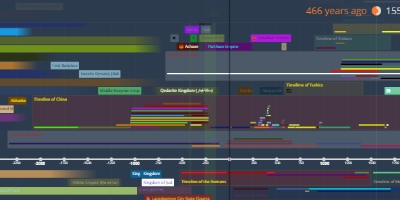Parthian Empire (jan 1, 247 BC – jan 1, 224)
Description:
The Parthian Empire (/ˈpɑːrθiən/), also known as the Arsacid Empire (/ˈɑːrsəsɪd/), was a major Iranian political and cultural power in ancient Iran from 247 BC to 224 AD. Its latter name comes from its founder, Arsaces I, who led the Parni tribe in conquering the region of Parthia in Iran's northeast, then a satrapy (province) under Andragoras, in rebellion against the Seleucid Empire. Mithridates I (r. c. 171–132 BC) greatly expanded the empire by seizing Media and Mesopotamia from the Seleucids. At its height, the Parthian Empire stretched from the northern reaches of the Euphrates, in what is now central-eastern Turkey, to present-day Afghanistan and western Pakistan. The empire, located on the Silk Road trade route between the Roman Empire in the Mediterranean Basin and the Han dynasty of China, became a center of trade and commerce.The earliest enemies of the Parthians were the Seleucids in the west and the Scythians in the north. However, as Parthia expanded westward, they came into conflict with the Kingdom of Armenia, and eventually the late Roman Republic. Rome and Parthia competed with each other to establish the kings of Armenia as their subordinate clients. The Parthians destroyed the army of Marcus Licinius Crassus at the Battle of Carrhae in 53 BC, and in 40–39 BC, Parthian forces captured the whole of the Levant except Tyre from the Romans. However, Mark Antony led a counterattack against Parthia, although his successes were generally achieved in his absence, under the leadership of his lieutenant Ventidius. Various Roman emperors or their appointed generals invaded Mesopotamia in the course of the ensuing Roman–Parthian Wars of the next few centuries. The Romans captured the cities of Seleucia and Ctesiphon on multiple occasions during these conflicts, but were never able to hold on to them.
Frequent civil wars between Parthian contenders to the throne proved more dangerous to the Empire's stability than foreign invasion, and Parthian power evaporated when Ardashir I, ruler of Istakhr in Persis, revolted against the Arsacids and killed their last ruler, Artabanus IV, in 224 AD. Ardashir established the Sasanian Empire, which ruled Iran and much of the Near East until the Muslim conquests of the 7th century AD, although the Arsacid dynasty lived on through branches of the family that ruled Armenia, Iberia, and Albania in the Caucasus.
Native Parthian sources, written in Parthian, Greek and other languages, are scarce when compared to Sasanian and even earlier Achaemenid sources. Aside from scattered cuneiform tablets, fragmentary ostraca, rock inscriptions, drachma coins, and the chance survival of some parchment documents, much of Parthian history is only known through external sources. These include mainly Greek and Roman histories, but also Chinese histories, prompted by the Han Chinese desire to form alliances against the Xiongnu. Parthian artwork is viewed by historians as a valid source for understanding aspects of society and culture that are otherwise absent in textual sources.
Added to timeline:
Date:
jan 1, 247 BC
jan 1, 224
~ 471 years
